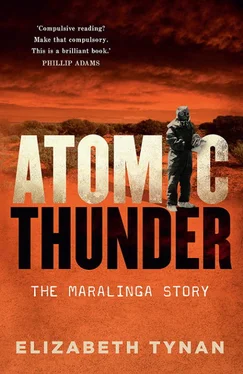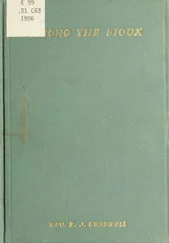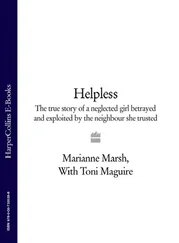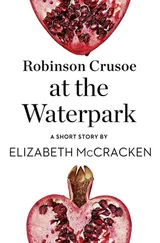Vixen B did not produce mushroom clouds. The major trials sent clouds of minute particles of debris into the stratosphere (more than 10 kilometres above the ground) and spread fallout of short-lived radionuclides over most of the Australian continent, with some isotopes found as far east as the Queensland tropics. The impact of the minor trials was more concentrated, more geographically contained, yet significantly more dangerous close to the firing site. The main dangers were to people in that geographical area, primarily service personnel and scientific staff who were conducting the tests, Indigenous people who traversed the land around Taranaki during or after the trials and later visitors to the site who may have unknowingly picked up radioactive materials or inhaled dust containing plutonium.
The dangers were grave, although there is considerable dispute about their extent. Lorna Arnold took the view that the people exposed to the tests were not seriously affected by radiation, doses of which she said were well within the guidelines laid down by the International Commission on Radiological Protection: ‘The people most affected… were the Aboriginals, because of damage to their way of life rather than directly to their health. They had no rights and their interest in the land was not realized or respected; but this was, and had been, their general situation and was neither new nor peculiar to the weapons trials’.
Vixen was initially proposed as one kind of test, but it evolved into two – Vixen A and Vixen B – a year or so after its first formulation. Vixen A, the original form of the experiments, used mostly beryllium and small quantities of plutonium. It involved studying how radioactive and toxic materials including beryllium, uranium and plutonium might behave in an incendiary or explosive accident and specifically examined how weather conditions influenced the spread of such materials. The tests involved burning the substances in a petrol fire or electric furnace, or dispersing them by high explosive. Thirty-one Vixen A experiments were carried out at the Wewak site, about 15 kilometres to the southeast of Taranaki.
The Vixen A experiments were troublesome for several reasons, not least because the balloons used to hoist a variety of monitoring devices aloft before detonating the bundles of radioactive materials kept slipping their moorings and heading off into the open sky. After one such incident in July 1959, a balloon was found the next day about 10 kilometres away from the test site. Another escaping balloon was not found. The balloon accidents associated with Vixen A caused major disruptions to the test program. In fact, these problems turned out to be a foretaste of more serious balloon incidents in September 1960 connected with Vixen B.
During a storm on the night of Friday 23 September 1960, seven of the eight captive balloons that had been placed for the start of the Vixen B experiments broke free. This was before the first Vixen B experiment, so the balloons were not contaminated. One of the balloons was discovered at Hungerford just over the New South Wales–Queensland border, about 1400 kilometres from Maralinga, and another at Cobar in New South Wales. The recovered Cobar balloon was found to have a faulty mooring system. Test authorities were worried that the footloose balloons would provoke media reports, but while some media did report the escaping balloons, none gave much detail.
After these incidents, the Australian Department of Defence ordered an inquiry, which was carried out by a senior official from the Department of Supply (and included John Moroney on the committee). It recommended that the use of balloons be restricted and proper safety plans be formulated. The inquiry had found that ‘a safety plan… did not exist… In consequence, the necessary criteria had not been laid down to ensure the development of such balloon safety and mooring systems and handling procedures that would have avoided any escape from the Maralinga range’.
Vixen B proceeded despite the balloon dramas and ongoing problems with the weather. The health and safety controls for these dangerous new experiments included a larger than normal stand-clear zone and dosimetry gauges to detect radiation to be worn by all site personnel. Those in the forward area close to the firing site also wore radiation protection suits, gloves, boots and full-face respirators. The only personnel allowed to be stationed close to the Taranaki site during Vixen B were British service personnel and AWRE representatives; not even the Australian health physics representative Harry Turner was allowed onto the Taranaki site during a firing. Turner’s health physics unit was involved from a distance, however, since the health physics requirements for Vixen B were the most demanding of the tests after the major trials.
The exclusion zone in the first Vixen B in 1960 was within a radius of 40 kilometres from the place of detonation. This was expanded to 43 kilometres in 1961 and ultimately to 56 kilometres by 1963. This compares with safety radii of between 5 and 25 kilometres for the other minor trials conducted at Maralinga at that time. John Symonds noted that the larger than normal safety zones induced speculation and curiosity. Years later, Moroney told his colleague Geoff Williams that ‘there was a genuine concern, albeit small, that one of the Vixen Bs could indeed have gone full nuclear’.
The greatest area of radiological contamination from the Vixen B tests was found in, roughly, a 1-kilometre radius from the firing pads. Arrays of sampling instruments were arranged to the north of the Taranaki firing range, to measure atmospheric dispersal and contamination levels for each Vixen B firing, although bad weather often compromised the readings.
The Vixen B assemblies were deliberately made to fit a definition imposed unilaterally by the AWRE (a definition not ratified by the Conference for the Discontinuance of Nuclear Weapons Tests in Geneva) that they ‘did not give a nuclear reaction in excess of ten tons of fission TNT equivalent’. At the Royal Commission, WE Jones, the AWRE’s co-ordinator of operations for Vixen B, revealed how the test authorities skirted around the new international restrictions on atomic testing. McClellan asked him, ‘In scientific terms there was no difference of real significance if you stayed under the ten tons, but the chances are you would not get caught, is that right?’ Jones: ‘I suppose that is a way of putting it politically’.
Each Vixen B blast blew the feather beds apart, so they could be used only once, after which they were buried in pits dug close to the Taranaki site. British engineer Raymond Carter, at the site during Vixen B, later asserted that the ‘quantities of contaminated debris at the Firing Sites had been much greater than originally planned’. In total, Vixen B scattered 22.2 kilograms of plutonium-239 around Taranaki. Although exact figures have never been established, it was later found that rather than 20 kilograms sitting safely in the Taranaki burial pits (there were 19 pits at the time, and two more were dug during the clean-up operations), it was actually spread all around the site, and well beyond, in particles of widely divergent sizes. When Vixen B was underway, a wire fence enclosed the contaminated areas with ‘keep out’ signs hung at regular intervals, while maps prepared for site staff showed the areas not to be entered. Most of the fences and signs were removed during the Brumby clean-up operation in 1967, in an effort to return the site to its pre-test appearance. In effect, the visible signs of the British tests were removed, but the invisible and more dangerous residue was not.
Plutonium-239 is a dangerous and persistent substance that delivers ionising radiation – the kind that changes the cells of a living body by knocking electrons out of stable atoms – when ingested or inhaled. It must enter the body to do harm – its weak alpha particles can travel only a few centimetres in air. Plutonium is one of the most toxic substances known, and its modern-day uses are strictly controlled, with licences and transparent monitoring protocols required. The small amount of plutonium-239 used in Australia these days is mostly under the auspices of the Australian Nuclear Science and Technology Organisation, which adheres to safety requirements laid down in the Australian Radiation Protection and Nuclear Safety (ARPANS) Act 1999 , in addition to the ARPANS Regulations 1999. It is used mostly as a measurement standard and to calibrate radiation detection equipment. It can no longer be blown up or spread around an open landscape. Current protocols for the use of plutonium both in Australia and internationally recognise its dangers, including its potential for terrorism. According to scholar Shaun Gregory, ‘It has been estimated that one millionth of a gram of plutonium-239 may be sufficient to cause lung cancer if inhaled… The fissile core of a single weapon would, if perfectly dispersed so that each individual had one millionth of a gram in his or her lungs, be sufficient to threaten cancer in every single member of the human race’.
Читать дальше












